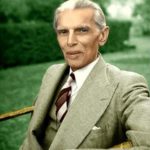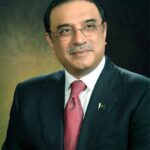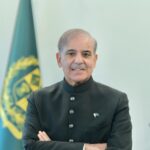The Islamic Republic of Pakistan
The Islamic republic of Pakistan emerged as an independent sovereign state on 14th August 1947, as a result of the division of former British India. It lies between 23-35 to 37- 05 north latitude and 60-50 to 77- 50 east longitude touching the Hindukush Mountains in the north and extending from the Pamirs to the Arabian Sea.
Pakistan covers 796,095 sq.km with a population of 132.35 million according to population census 1998. It is divided into four provinces:
Punjab
Sindh
Khyber Pakhtunkhwa
Balochistan
Climatically, Pakistan enjoys a considerable measure of variety. North and north western high mountainous ranges are extremely cold in winter while the summer months of April to September are very pleasant.
The country has an agricultural economy with a network of canals irrigating a major part of its cultivated land. Wheat, cotton, rice, millet and sugar cane are the major crops. Among fruits: mangos, oranges, bananas and apples are grown in abundance in different parts of the country. The main natural resources are natural gas, coal, salt and iron. The country has an expanding industry. Cotton, Textiles, sugar, cement, and chemicals play an important role in its economy.
The country comprises of a vast area that was the great center of ancient civilizations of the world. Its historical sites beginning with stone-age to Twentieth Century A.D are a mirror of the life of its people who were, by nature, simple, virile, hospitable and hard working. Ancient sites excavated inTaxila, Harappa, and Moenjodaro speak volumes for Pakistan's rich cultural background dating back to 3,000 B.C.
Basic Facts
| Official Name: | Islamic Republic of Pakistan |
| Father of the Nation: | Quaid-i-Azam Muhammad Ali Jinnah (1876-1948) |
| National Poet: | Allama Muhammad Iqbal (1877-1938) |
| President: | Mr Asif Ali Zardari |
| Prime Minister: | Mr Shehbaz Sharif |
| Capital: | Islamabad |
| Total Area: | 796,095 square kilometer Punjab: 205,344 sq. km. Sindh:140,914 sq. km. Khyber Pukhtoonkhwa: 74,521 sq. km. Balochistan: 347,190 Sq. km. Federally Administered Tribal Areas: 27,220 sq. km. |
| Population | 235.8 million (estimated) |
| Per Capita Income: | US $1085 (Click here for details) |
| GDP: | 4.7% |
| Currency: | Rupee (PKR) |
| Major Imports: | Industrial Equipment, Chemicals, Vehicles, Steel, Iron ore, Petroleum, Edible Oil, Pulses, Tea. |
| Major Exports: | Cotton, Textile goods, Rice, Leather items, Carpets, Sports Goods, Handi-crafts, Fish and Fish prep. and Fruits |
| Languages: | Urdu (National), English (Official) |
| Literacy rate: | 58% |
| Government: | Parliamentary Democracy |
| Popular Games: | Cricket, Hockey, Football, Squash |
| Tourist’s Resorts: | Murree, Quetta, Hunza, Ziarat, Swat, Kaghan, Chitral and Gilgit |
| Archaeological Sites: | Moenjo Daro, Harappa, Taxila, Kot Diji, Mehr Garh, Takht Bhai |
| Major Cities: | Islamabad, Karachi, Lahore, Peshawar, Quetta, Rawalpindi, Hyderabad, Faisalabad, Multan, Sialkot |
| Major Crops: | Cotton, Wheat, Rice and Sugarcane |
| Total Cropped Area: | 25.01 million hectares |
| Industry: | Textiles, Cement, Fertiliser, Steel, Sugar, Electric Goods, Shipbuilding |
| Energy | Electricity (Hydel, Thermal, Nuclear) Oil, Coal, and Liquid Petroleum Gas 22763 MW |
Important Websites:
- covid.gov.pk
- The President of the Islamic Republic of Pakistan
- Prime Minister's Office
- Ministry of Foreign Affairs
- Ministry of Interior
- Ministry of Finance
- Economic Affairs Division (EAD)
- Ministry of Overseas Pakistanis and Human Resource Development
- Higher Education Commission of Pakistan
- Ministry of Defence
- Ministry of Information, Broadcasting and National Heritage
- Ministry of Information Technology and Telecommunication
- Ministry of Scienc and Technology
- Ministry of Water & Power
- Ministry of Parlimentary Affairs
- Ministry of Textile Industry
- Ministry of Kashmir Affairs and Gilgit Baltistan
- Web Gateway to the Government of pakistan


